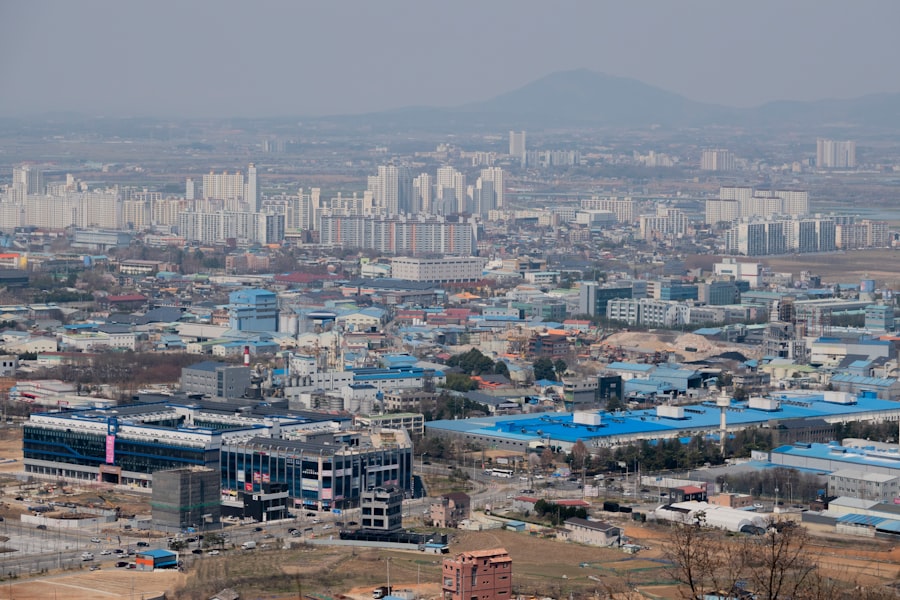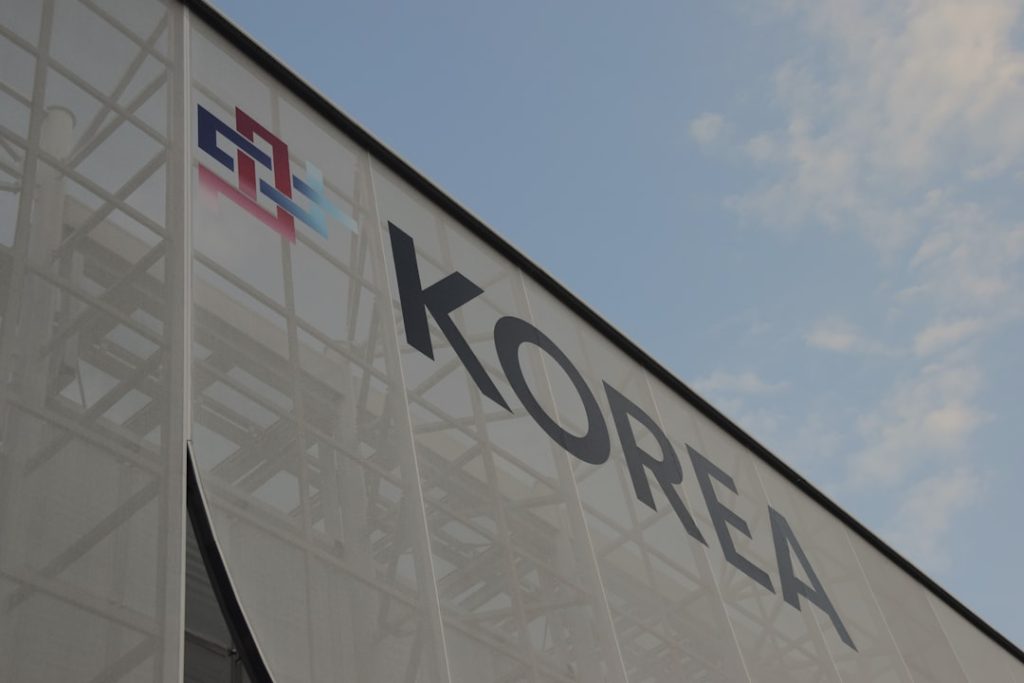Korea Aerospace, a burgeoning sector within South Korea’s economy, has emerged as a significant player in the global aviation landscape. The country has made remarkable strides in developing its aerospace capabilities, driven by a combination of government support, technological innovation, and a skilled workforce. The aerospace industry encompasses a wide range of activities, including the design, manufacture, and maintenance of aircraft and spacecraft.
South Korea’s commitment to advancing its aerospace sector is evident in its investments in research and development, as well as its strategic initiatives aimed at fostering collaboration between public and private entities. The importance of the aerospace industry extends beyond mere economic metrics; it plays a crucial role in national security, transportation, and technological advancement. As countries around the world seek to enhance their aerospace capabilities, South Korea has positioned itself as a competitive player, leveraging its technological prowess and strategic location in East Asia.
The nation’s focus on innovation and quality has led to the development of advanced aircraft systems, satellite technologies, and space exploration initiatives, all of which contribute to its growing reputation in the global aerospace arena.
Key Takeaways
- Korea Aerospace has played a pivotal role in advancing South Korea’s aviation industry since its inception.
- The company has evolved through significant technological innovations and strategic growth over the years.
- Collaborations with global aviation leaders have strengthened Korea Aerospace’s position in the international market.
- Its contributions have had a notable impact on global aviation, enhancing both commercial and defense sectors.
- Future prospects focus on cutting-edge innovations, addressing challenges, and seizing new opportunities in aviation technology.
History and Evolution of Korea Aerospace
The history of Korea’s aerospace industry can be traced back to the early 20th century, but it was not until the latter half of the century that significant developments began to take shape. Following the Korean War, the government recognized the need for a robust defense industry, which laid the groundwork for aerospace advancements. In 1976, the establishment of the Korea Aerospace Industries (KAI) marked a pivotal moment in the country’s aerospace journey.
KAI was tasked with developing indigenous aircraft and supporting the nation’s defense capabilities. Throughout the 1980s and 1990s, South Korea’s aerospace sector began to gain momentum with the introduction of various military aircraft programs. The T-50 Golden Eagle, developed in collaboration with Lockheed Martin, became a symbol of this evolution.
This advanced trainer jet not only showcased South Korea’s engineering capabilities but also served as a platform for training future generations of pilots. The successful development of the T-50 laid the foundation for further advancements in both military and civilian aviation sectors.
Advancements in Aviation Technology by Korea Aerospace

Korea Aerospace has made significant advancements in aviation technology, particularly in the areas of aircraft design and manufacturing processes. One notable achievement is the development of the KAI KF-21 Boramae, a next-generation fighter jet designed to enhance South Korea’s air defense capabilities. This aircraft incorporates cutting-edge stealth technology, advanced avionics, and superior maneuverability, positioning it as a formidable contender in the global fighter jet market.
The KF-21 project exemplifies South Korea’s commitment to self-reliance in defense technology while also aiming for export opportunities. In addition to military advancements, South Korea has also made strides in commercial aviation technology. The development of the Korean Regional Jet (KRJ) is a prime example of this effort.
Designed to cater to regional airlines, the KRJ aims to compete with established players like Bombardier and Embraer. By focusing on fuel efficiency and passenger comfort, the KRJ represents South Korea’s ambition to carve out a niche in the competitive regional aircraft market. These advancements not only enhance domestic capabilities but also position South Korea as an emerging player in global aviation technology.
Collaborations and Partnerships in the Aviation Industry
| Collaboration/Partnership | Type | Key Participants | Purpose | Year Established | Impact Metrics |
|---|---|---|---|---|---|
| Star Alliance | Airline Alliance | United Airlines, Lufthansa, Air Canada, ANA, etc. | Global network for code sharing and customer benefits | 1997 | 26 member airlines, 1,300+ destinations, 762 million passengers annually |
| SkyTeam | Airline Alliance | Delta Air Lines, Air France, KLM, Korean Air, etc. | Enhance connectivity and frequent flyer benefits | 2000 | 19 member airlines, 1,150+ destinations, 630 million passengers annually |
| OneWorld | Airline Alliance | American Airlines, British Airways, Qantas, Cathay Pacific, etc. | Seamless travel experience and shared services | 1999 | 13 member airlines, 1,000+ destinations, 530 million passengers annually |
| Boeing and Embraer Partnership | Manufacturing Collaboration | Boeing, Embraer | Joint development and marketing of commercial jets | 2018 | Access to regional jet market, expanded product portfolio |
| Airbus and Bombardier C Series Partnership | Manufacturing Collaboration | Airbus, Bombardier | Marketing and support for C Series aircraft (now A220) | 2018 | Increased sales and global reach for A220 aircraft |
| NASA and Boeing Sustainable Aviation Partnership | Research Collaboration | NASA, Boeing | Development of eco-friendly aviation technologies | 2020 | Advancements in fuel efficiency and emissions reduction |
| International Air Transport Association (IATA) | Industry Association | 290+ airlines worldwide | Standardization, safety, and advocacy in aviation | 1945 | Improved safety standards, 82% of global air traffic represented |
Collaboration has been a cornerstone of Korea’s aerospace development strategy. The government has actively sought partnerships with leading global aerospace companies to leverage their expertise and technology. For instance, South Korea’s collaboration with Boeing on various projects has facilitated knowledge transfer and skill development within the local workforce.
This partnership has not only enhanced South Korea’s manufacturing capabilities but has also opened doors for future collaborations in areas such as unmanned aerial vehicles (UAVs) and space exploration. Moreover, international partnerships extend beyond military applications. The Korean government has engaged with European aerospace firms through initiatives like the European Space Agency (ESA) to develop satellite technologies and participate in joint space missions.
These collaborations have enabled South Korea to access advanced technologies while contributing to global aerospace initiatives. By fostering an environment conducive to collaboration, South Korea is positioning itself as a hub for innovation and technological exchange within the aviation industry.
Impact of Korea Aerospace on Global Aviation
The impact of Korea Aerospace on global aviation is multifaceted, encompassing economic contributions, technological advancements, and strategic partnerships. Economically, the aerospace sector has become a vital component of South Korea’s GDP, generating jobs and stimulating growth across various industries. The establishment of KAI and other aerospace firms has created thousands of high-skilled jobs, contributing to the nation’s overall economic resilience.
Technologically, South Korea’s innovations have influenced global aviation standards. The country’s advancements in aircraft design and manufacturing processes have set benchmarks for efficiency and performance. For instance, the T-50 trainer jet has garnered international attention for its capabilities and has been exported to several countries, showcasing South Korea’s ability to compete on a global scale.
Furthermore, South Korean satellite technologies have contributed to advancements in global communication systems and Earth observation capabilities.
Future Prospects and Innovations in Aviation Technology

Looking ahead, the future prospects for Korea Aerospace are promising, driven by ongoing investments in research and development as well as a commitment to innovation. One area poised for significant growth is urban air mobility (UAM), which envisions the use of electric vertical takeoff and landing (eVTOL) aircraft for urban transportation. South Korean companies are actively exploring UAM solutions, aiming to develop efficient and sustainable transportation options for congested urban areas.
Additionally, advancements in artificial intelligence (AI) and automation are expected to revolutionize various aspects of aviation technology. From predictive maintenance systems that enhance aircraft reliability to AI-driven air traffic management solutions that optimize flight operations, these innovations will play a crucial role in shaping the future of aviation. South Korea’s emphasis on integrating AI into its aerospace initiatives positions it at the forefront of this technological evolution.
Challenges and Opportunities for Korea Aerospace
Despite its impressive growth trajectory, Korea Aerospace faces several challenges that could impact its future development. One significant challenge is competition from established aerospace powers such as the United States and Europe. These regions have long-standing expertise and resources that can make it difficult for emerging players like South Korea to gain market share.
To overcome this challenge, South Korean companies must continue to innovate and differentiate their products through advanced technology and superior performance. Another challenge lies in securing a skilled workforce capable of meeting the demands of an evolving aerospace industry. As technology continues to advance rapidly, there is an increasing need for engineers and technicians who are proficient in cutting-edge technologies such as AI, robotics, and advanced materials.
To address this issue, educational institutions must collaborate with industry stakeholders to develop training programs that equip students with relevant skills. Conversely, opportunities abound for Korea Aerospace as it seeks to expand its influence on the global stage. The growing demand for sustainable aviation solutions presents a unique opportunity for South Korean companies to lead in developing eco-friendly technologies such as electric propulsion systems and sustainable aviation fuels (SAFs).
By investing in research focused on sustainability, South Korea can position itself as a leader in addressing environmental challenges within the aviation sector.
Korea Aerospace’s Contribution to the Aviation Industry
Korea Aerospace has made significant contributions to the aviation industry through its innovative technologies, strategic partnerships, and economic impact. As it continues to evolve, South Korea is poised to play an increasingly important role in shaping the future of global aviation. With ongoing investments in research and development, a commitment to collaboration, and a focus on sustainability, Korea Aerospace is well-positioned to navigate challenges while seizing opportunities that lie ahead.
The journey of Korea Aerospace reflects not only national ambition but also a broader commitment to advancing human mobility through technological innovation. As countries around the world grapple with issues such as climate change and urban congestion, South Korea’s contributions will be vital in developing solutions that enhance connectivity while prioritizing environmental sustainability. Through its ongoing efforts, Korea Aerospace stands as a testament to what can be achieved when vision meets determination in the pursuit of excellence within the aviation industry.




